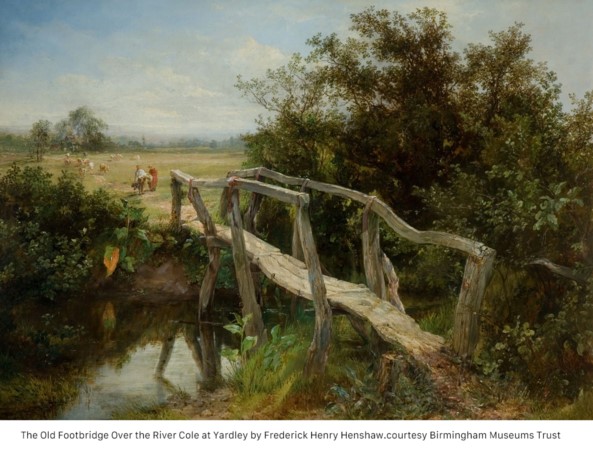
The River Cole
In the mid nineteenth century, George Shaw and his neighbour, landscape painter Frederick Henry Henshaw would walk, sketch, photograph and talk together along the banks of the River Cole, close to their homes in Small Heath, Birmingham. The river was then rural, a distance from the rapidly encroaching industrialisation of the city.
“ ‘I began the practice,’ he says, ‘of painting out of doors in the neighbourhood’ – the Yardley district was a favourite resort with him – ‘ and of making special studies of weeds and foreground material, larger than would be wanted for use, so as to ensure accuracy of form and detail.’ […] it was his custom also to refer to photographs of the scenes he had visited, or of special portions of them ; these photographs being mostly taken for him by his friend Mr George Shaw, who was often his companion from time to time during the sketching season.”
in The Death of Mr F. H. Henshaw’ Oct 12th 1891 Birmingham Daily Post
In 2018 – 2019 I walked the length of the River Cole, retracing its flow backwards from its congruence where it joins the Blythe at Coleshill to its beginnings around Major’s Green as it winds its way through the south-east suburbs of Birmingham. 170 years of industry in the city has made its mark upon the river known to Shaw and Henshaw. The contemporary suburban sprawl of the city marks this blue space as a useful one for recreation within a crowded landscape. Factories and industrial spaces back on to the river’s footpath, millponds and brick buildings which point to the role of the river in the industrialisation of the city.
Photographic negatives are made with the same process that Shaw was using to photograph the river in 1850 – Dr John Adamson’s 1841 calotype process. They are printed from the Calotype negatives as salt prints using another period recipe. Materials which form a bridge between the River Cole which Shaw and Henshaw experienced in 1850 and my experience of the river today.
The resulting photographs explore the stuff of the landscape and history, the materials of the chemicals, paper, soil, water and place.
This work was made possible thanks to support from Arts Council England's DYCP fund.